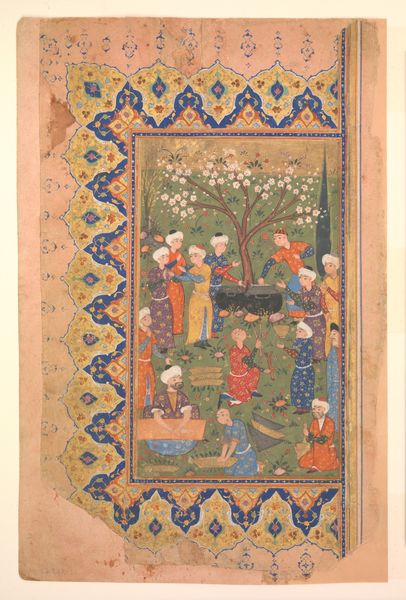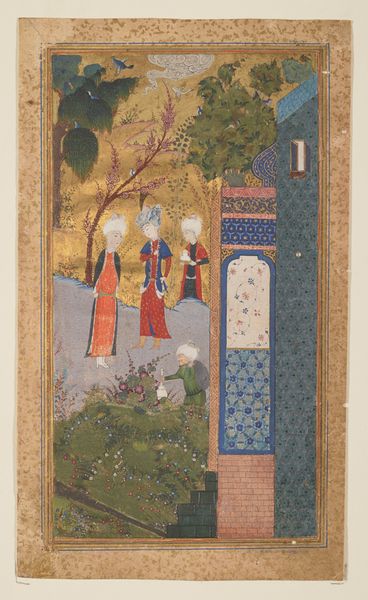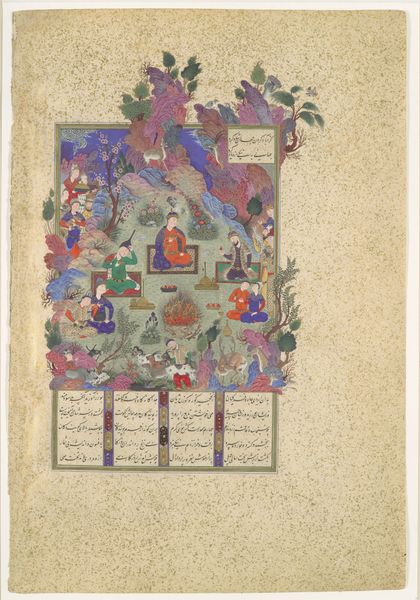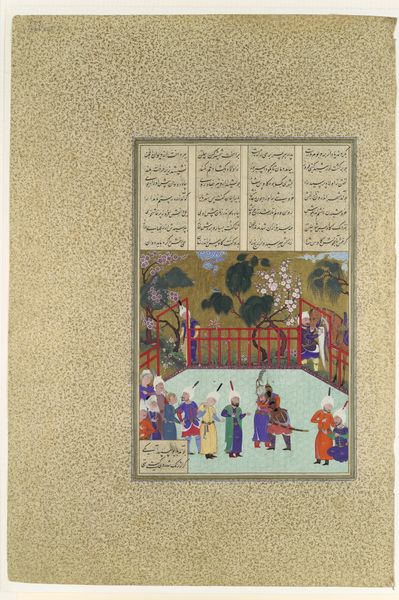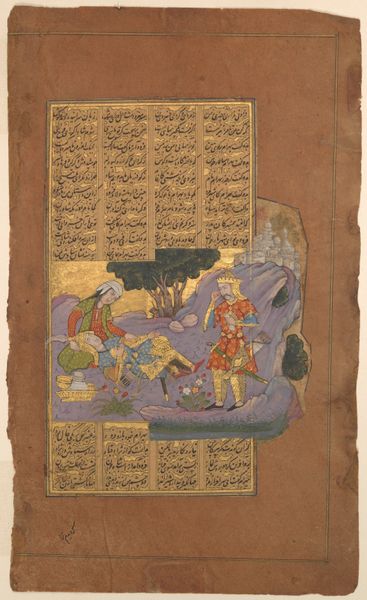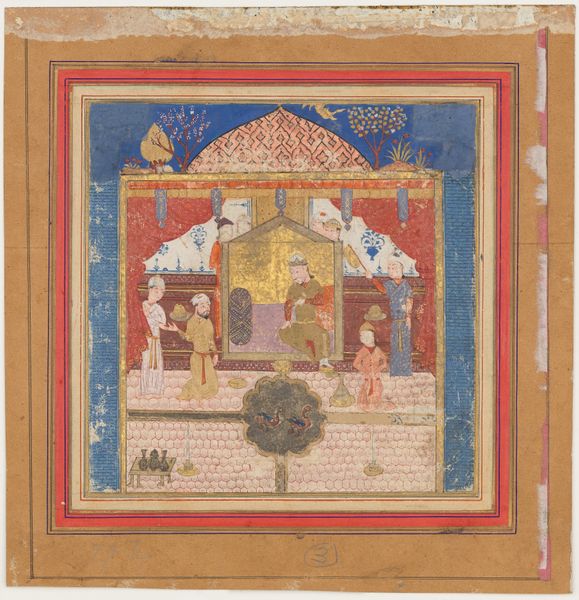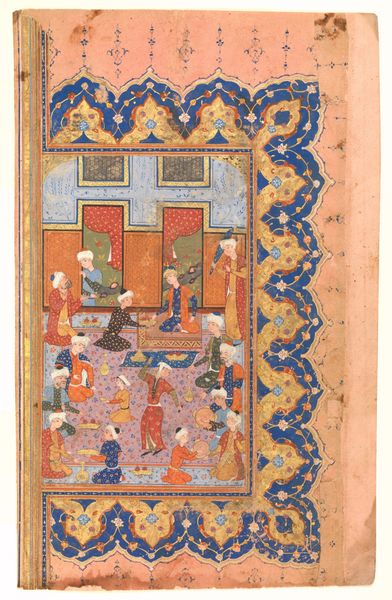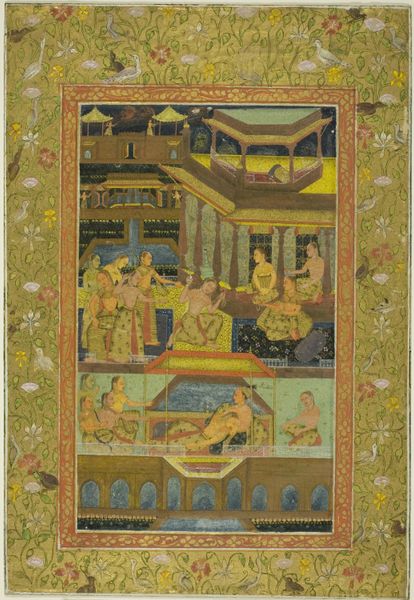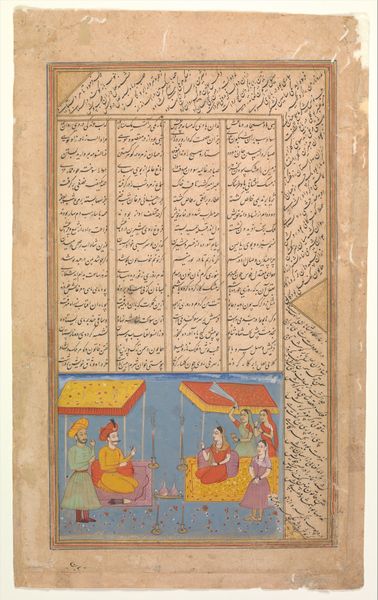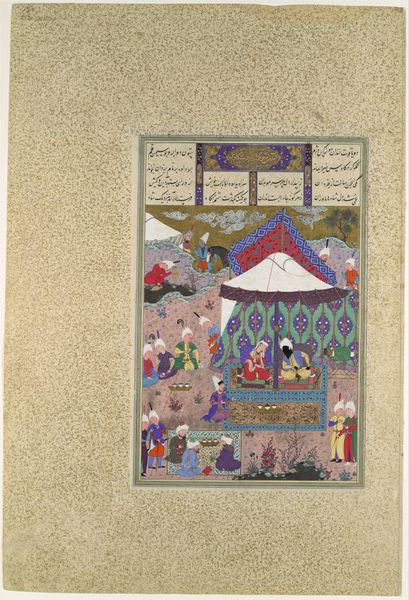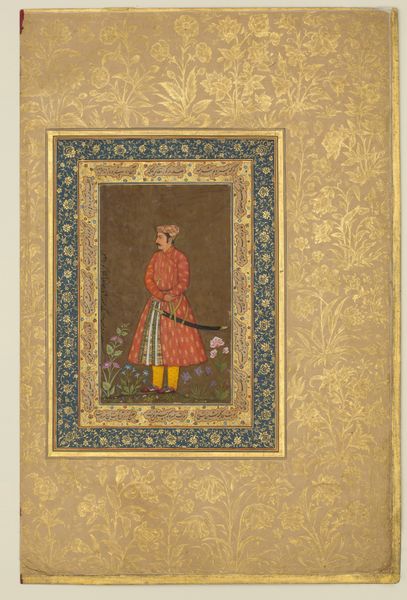
"Rescue of Bizhan by Piran", Folio from a Shahnama (Book of Kings) of Firdausi 1585 - 1635
0:00
0:00
painting, watercolor
#
water colours
#
narrative-art
#
painting
#
figuration
#
watercolor
#
horse
#
men
#
islamic-art
#
miniature
Dimensions: Page: H. 7 7/8 in. (20 cm) W. 4 3/4 in. (12.1 cm) Painting: H. 5 3/16 in. (13.2 cm) W. 2 3/4 in. (7 cm)
Copyright: Public Domain
Curator: Here we have "Rescue of Bizhan by Piran," a luminous page dating back to between 1585 and 1635 from a Shahnama, or Book of Kings, crafted during the Islamic era. It's rendered in delicate watercolours, adding to its almost dreamlike quality. Editor: It feels incredibly tense for something so small. There’s such concentrated activity, almost frantic, set against this dreamy backdrop. It makes the rescue feel very urgent. Curator: Absolutely, the tight composition amplifies that tension. We see Piran orchestrating the rescue of Bizhan, who's being lowered, or perhaps pulled, from what looks like a deep well or pit. Editor: It is impossible to ignore how fraught with danger the narrative and compositional construction are, right down to the single line being used to rescue the almost entirely unclothed body of Bizhan, who seems to have become trapped as a result of his ethnicity. It reminds us about the significance of looking closely at who holds the power in narratives and the context around depictions of gendered bodies. Curator: Indeed. The miniatures are always so full of symbolism, even when they are depicting well known scenes from stories. The tension is carried in the colours too; even that backdrop is somehow menacing, the idyllic scenery becomes more of a lurid setting for imprisonment and torture, with the muted colours almost camouflaging the landscape. It speaks to the subtle manipulation that stories can sometimes play on the psyche. Editor: And in a broader sense, these stories, these Shahnameh narratives, often reinforced power structures of the time. Who was included, who was excluded, who was depicted as a hero, who as a villain – these choices weren't accidental. They were meticulously curated to bolster specific political and social ideologies, even when packaged as mere entertainment. Curator: Looking closely, it's easy to become consumed with a tale about love, war and adventure, as intended. Ultimately, I am interested in the details the artists chose to leave behind as reminders that we must never assume that narratives, historical or otherwise, are harmless or inherently factual. It makes me think more about who is rescued, how and by whom – not to forget the people writing that narrative. Editor: It really invites you to think about how we frame rescue, what vulnerabilities are revealed, and what political agendas may lurk beneath the surface of the grand gesture. I feel like I could get lost in these little gems forever, looking at not only what's on display but what is actively omitted.
Comments
No comments
Be the first to comment and join the conversation on the ultimate creative platform.
